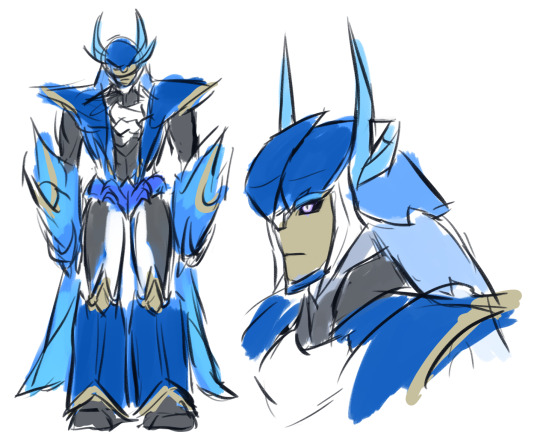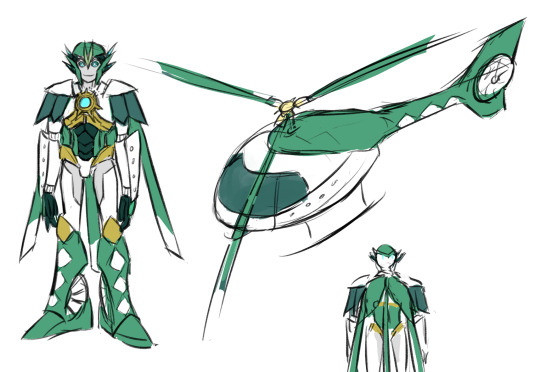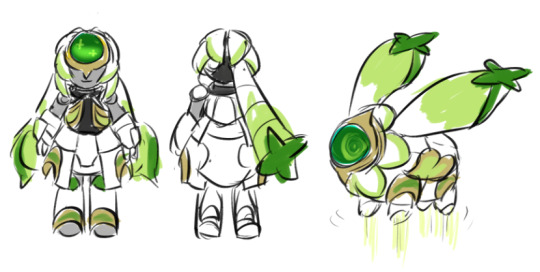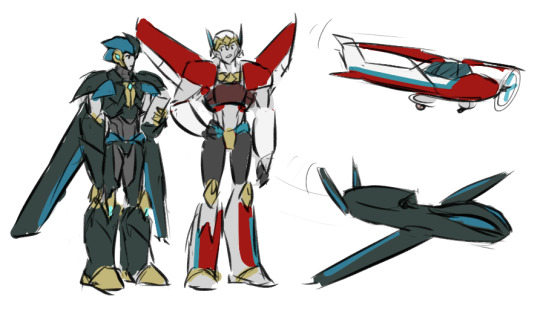#Leafnode
Explore tagged Tumblr posts
Text
Adventures in Self Hosted Email
Photo de Yannik Mika sur Unsplash It has been a while since I’ve updated the situation on moving oh.mg to a self hosted email method, and let me tell you there is absolutely no fucking… … thing to report. It has been going well actually, pretty normal for once. There is a bit of a delay sometimes and I discovered this is down to Leafnode taking resources when the internal machines connect to…

View On WordPress
#bbs#CSF#decentralisation#email hosting#email relaying#false positives#firewall rules#GAFAM#inbound filtering#IP reputation#Leafnode#mailbox encryption#metadata#MXGuardDog#NNTP queues#outbound filtering#port 25#relays#self-hosted#SMTP server#SpamExperts#throttling#Wildduck
1 note
·
View note
Text




some silly robot designs
their silly lore:
Judicator is a Predacon who survived the Cataclysm with amnesia and a damaged T-Cog; he's vaguely aware that he used to have a different altmode, and also feels a bit...out of place among others, but he sets that aside in favor of focusing on his work. Hardly anyone knows his actual name; Judicator is his title.
Vent's just a normal musician, don't worry about it! The fact that he keeps singing songs about things he couldn't possibly know about or events that have yet to occur is just happenstance; he's a very good storyteller, you know.
Leafnode is a walking, talking terminal for Vector Sigma. This drew some unwanted attention from the High Council, who upon discovering her unique traits, quickly squirreled her away for "protection".
Tayef and Ahangar are, respectively, a clerk for the High Council and an architect. Both before and after the war, actually! Ahangar's not super happy that the planet had to get the scrap kicked out of it for him to get as much work as he does now; Tayef's just happy he managed to get his old job back.
#genshin impact#transformers#i was going to make more guys or at least polish these ones before posting but then the moment passed and i ran out of steam#also yes i realize there's Already A Guy named Ahangar in genshin i just can't be arsed to come up with a better name for this design#genshin impact alhaitham#genshin#alhaitham#genshin kaveh#nahida#genshin impact fanart#neuvillette#neuvilette genshin#genshin neuvillette#genshin venti#genshin fanart#transformers oc#tf oc#sort of#brookriver art#art#fanart
106 notes
·
View notes
Text
Makin' HTML
So for the Site Generator app we're supposed to make for Boot.dev, the one place where I diverged heavily from their solution was that I'm using Enums for tags where they're using strings.
I totally get where their method saves time on the programming end, since mine requires my Enum list includes all the HTML tags my target user might use. Mine also has kind of clunky writing for clarity - Where their tag is "p" mine is NodeTag.PARAGRAPH, which is more writing, albeit not much more because in a development environment I press n and it autofills NodeTag and then I hit .pa and it autofills PARAGRAPH. So I'm actually pressing 6 buttons instead of 3 (n-tab-.-p-a-tab) which isn't bad.
Mine meanwhile refuses to process illegal tags. If something tries to go <banana>text</banana> it'll reject that. Besides that, my understanding is we'll be taking a list of expected tags and making methods that convert the stuff the user does into tagged nodes, which means, again, that we're working off of a list anyway. It also means that while it takes a few more keystrokes to code it's not that the user will be typing in the tags, meaning having them be longer isn't any kind of usability issue.
Anyway the core structure of the latest bit is that we're recursively making tagged nodes, some of which might have children and others not, into properly HTMLified strings.
child = LeafNode(NodeTag.ITALIC, "Emphasized text") child2 = LeafNode(NodeTag.BOLD, " or even more emphasized.") parent = ParentNode(NodeTag.PARAGRAPH, [child, child2])
This should spit out
<p><i>Emphasized text</i><b> or even more emphasized.</b></p>
The recursion I'm using here is pretty simple: There's a segment in my .toHTML() method for a parent node that does this:
for child in children: if child.children: output += child.toHTML()
This is what makes it finish all the interior stuff before it moves on to putting in the closing section.
The phrase "if child.children" is shorthand for "if child.children != None," aka "if this object has a 'children' parameter with some data in it." ParentNodes, by definition, have children, while LeafNodes by definition do not. The reason we call 'em leaf nodes and not just child nodes is that there's nothing stopping a child node from having a child node of its own.
Once we get down to the LeafNode area, the .toHTML() method changes in purpose (because it's using LeafNode's .toHTML() instead of ParentNode's) to actually spitting out data, which essentially means the structure of the nodes itself is giving the recursion its base case, which is pretty slick!
0 notes
Text
Algo Assignment2-HackerRank Solved
The goal is to implement this with an algorithm whose running time is O(log(n)) using the “lazy update” strategy discussed in class (and in the 2-3 tree handout). You should use the following data layout: class Node { KeyType guide; ValueType value; } class InternalNode extends Node { Node child0, child1, child2; } class LeafNode extends Node {} Compared to Programming Assignment 1, this change…

View On WordPress
0 notes
Text
If you are into colonizing Mars, you have heard that we can launch only every 26 months during a small window of time. That is because only certain trajectories to Mars work.
This throws a spanner into planning for your colony resupply missions and manned missions alike. As we saw in the movie ‘The Martian’ with Matt Damon playing astronaut-botanist Mark Watney, missing your flight home and waiting for rescue could become a slightly tedious affair filled with self-doubt, potatoes and disco.
The ability to send missions every year and not need exotic propulsion nor suffer other penalties would be a real breakthrough. It appears we possibly could.
William Tell on steroids…
The current approach essentially consists of aiming very, very precisely and shooting an arrow into a speeding apple 400 million kilometers away. Marksmanship has indeed seen progress.
But because the apple has an atmosphere, moves at an angle and has gravity, you also have to slow your craft down, with the right force, at the right angle to be captured by its gravity.
Miss the angle or the burn, and your vehicle either sees a fiery death (too steep), or skips off the atmosphere like a pebble (too shallow) flying out beyond Mars without any chance to ever reach it. Tricky, but it has been successfully used for decades. Most of the time.
Hohmann Transfer Orbit Hohmann transfer orbit, labelled 2, from Earth orbit (1) to a higher orbit (3) e.g MARS (Credit: Leafnode – Own work based on image by Hubert Bartkowiak – (CC BY-SA 2.5))
This trajectory, the best we knew, is called a Hohmann transfer orbit. Because the two planets have to be relatively close to each other, the launch window opens only every 26 months. It closes only a handful weeks later, when the orbits of Mars and Earth move out of alignment. Once launched, a standard rocket needs 9 months to reach Mars. Faster transfers are possible if you use either a bigger rocket or a smaller payload. This is because you trade a higher change in velocity (or Delta-V) against payload.
This brief launch window, is why NASA, ESA, ISRO, all scramble to get their MARS missions launched with a precise cadence of about every other year. When a science experiment has a last-minute malfunction before launch, this could mean your launch window closes and you have to wait another two full years. This head ache happened to the INSIGHT mission which was originally planned to launch in March 2016. Unfortunately, because a mission critical Seismometer destined to hunt for Mars-quakes (SEIS, originally delivered by the French CNES), sprung a small leak (it lost its vacuum), INSIGHT will now launch May 5 2018.
A More Flexible Option
But are we tied to this 2 year interval? For decades the conventional wisdom said yes. Recently however, a new approach has been found allowing for more planning flexibility.
LOW ENERGY TRAJECTORY ORBITS
Edward Belbruno, a mathematician, artist, Princeton University scientist specialized in celestial mechanics had the intuition, already in the ’80-ies when he worked at NASA JPL, that one might do better. He looked at the problem and thought there might be a different way to get from one gravity bowl, into another one, which is what essentially happens when you go from planet to planet.
Brute Force
The Hohmann transfer can be most likened to a brute force approach. You shoot out in almost a straight line and once at Mars, you violently push the brakes not to overshoot your destination. You must do so, because you essentially have two intersecting trajectories. The probe, on its voyage, is flying so fast that the gravity of MARS simply is not strong enough to capture it in its gravity bowl. The probe will indeed deflect from its course, but without a burn you will leave Martian orbit (your trajectory remains hyperbolic).
Ballet
Compared to this, the Ballistic approach, also called low energy trajectory, is more akin to a delicate ballet. Imagine those two gravity bowls as being real bowls and put them side by side. In reality both are moving. Now imagine that you are trying to push a grape out of one bowl with as little energy as possible, balancing it on the (gravity) rim of both bowls, and then letting it slide effortlessly into the other bowl, ideally tipped over only by the force of gravity. Before the grape settles down in the middle, it will follow a slightly chaotic path. This is also the case in this Low energy trajectory.
What the pictures below cannot convey, is that the rims of the gravity bowls extend and touch each other ever so slightly. The trajectories are also more three-dimensional than shown. Still, they get the point across. The space that connects them can be thought of as a small river, or a balancing rope, where the gravity of the bodies cancel out. If one uses slow but efficient ion propulsion, the goal then is to spiral out from Earth to eventually follow them and spiral in at the destination, but if you use chemical propulsion, only the arrival part of the trajectory is different from a Hohmann transfer.
You essentially shoot out towards MARS, along this sweet spot, in the same manner as you would on a Hohmann transfer. But this time you aim for a space far in front of MARS, a couple of million kilometers, making sure the heliocentric orbit of the probe closely matches the eccentricity of the ellipse of MARS around the sun, and have MARS catch up with you. To make small adjustments on this last bit, and slide into the gravity bowl, you only need to sip propellant. The result can be a 25% reduction on the propellant use for the capture burn. Hence, the name low energy trajectory.
Translated back to the William Tell analogy: You shoot the arrow far in front of the apple, seemingly hover in place, and wait for the apple to catch the arrow.
“The fact that one is allowed to move to a place far from Mars has an implication on the launch period from the Earth to get to Mars. For the case of a Hohmann transfer, there is a small launch period of a few days that must be satisfied when the Mars and Earth line up. This is because a point, i.e. Mars, has to be directly targeted. If this is missed for any reason, a large penalty in cost may occur since launch may not be possible. This problem would be alleviated if the launch period could be extended. By targeting to this location out in front rather than to Mars, it is not necessary to wait every two years, but rather, depending on how far the arrival point is separated from Mars, the time of launch could be extended significantly. This is because an orbit is being targeted, rather than a single point in the space.” (2014 paper, p. 16)
To sum up, the trajectory comes with a couple of benefits
If you want, you can have a 25 % reduction on the capture burn but the route is quite slow. If you speed it up you lose the propellant advantage, but the duration matches that of a Hohmann transfer in most cases.
Hence, you can find trajectories that match the Hohmann transfer at different times of the orbital dance.
If you do use less fuel, you save USD 50.000 per kg of propellant. The difference could mean using a smaller, less expensive rocket, creating additional savings.
Conversely, you could opt to carry more payload on the same spacecraft.
To be captured you only need to end up in a region in the vicinity of Mars comparable to the rim of that bowl (this is called the weak stability boundary).
The trajectory works for slow efficient cargo missions and for manned missions.
But most importantly, you can launch to MARS at least once every year.
Concrete benefits for Martian settlements
Imagine being able, instead of launching once every 26 months, launch payloads every 6 months, or for a large slice of this 26 period. Supplying a colony with food, parcels would become possible on a predictable, regular schedule.
Just like in the old days, knowing exactly when mail arrives and having the anticipation grow to see it drop from the sky (seeing that Tesla finally land) will be a reason for even the most depressed Martian colonist to celebrate and break up the routine a bit.
Regular resupply also enable Mars colonies (or others) to be resupplied with smaller vehicles, as you do not need to plan for every contingency in the next 26 months. Because you can call for supplies of specific items and get them a year or more sooner than you would in a Hohmann cadence, not everything needs to be shipped with multiple redundancy on a big rocket. It is not perfect. But, as any pregnant woman will tell you, waiting 9 months is better than 26 months (the partner nods).
If trading propellant for payload is an option, you might get the time down to three to four months.
This cadence also falls in line with yearly reporting cycles for commercial businesses. The latter is quite important as it makes both expenditures and profits predictable. Seemingly small things like this are no longer trivial. CEO’s know they need to keep (institutional) investors with tightly managed risk port folio’s well-informed and happy.
MATH
Still here? You want to know more?
When one goes into detail, it turns out the math gets pretty complicated. Belbruno, et al., made it work for the Moon (Hiten 1991, JAXA), but at MARS, the math is more contrived. (He received the Humboldt Price in mathematics)
To use another metaphor, it really is comparable to trying to dance on a tight rope while being pulled from all sides. In this case planets are doing the pulling and the math is a many body problem, requiring fuzzy chaotic orbits.
Also, the visual metaphors in this article are not an accident. Belbruno strongly feels that his artistic paintings helped him to get a feel, intuition for the aesthetics and process of the math.
Luckily Belbruno is a very persistent mathematician and, cooperating with other universities, has already found some solutions to the complex math, iterating in backward time, needed to calculate a region called the weak stability boundary, the spacecraft needs to end up in.
Calculated shape of weak stability boundary around MARS – the ship needs to remain in the blue area to enable capture for little or no energy compared to Hohmann (Screenshot from Belbruno’s presentation below)
However, to extend the solutions to distances farther away from Mars, or arriving earlier in the orbit, more detailed simulations are required. In their 2014 papers they just desired to prove that what worked for the Moon in 1991, in principle also works for Mars.
Are you the one?
If you are math inclined, or would like to help tackle the challenge to calculate a good regular ferry schedule for the next century, you can get a nice introduction in both the Hohmann transfer and the low energy capture from the inventor himself (below). Or you can follow this link to his 2014 paper he coauthored with Francesco Topputo from the Milan Politecnic University (*)
If you do so, please inform our crew, Belbruno and all others of the results. There are prizes of many natures to be won.
Footnotes:
(*) Earth–Mars Transfers with Ballistic Capture, Francesco Topputo, Edward Belbruno, DOI: 10.1007/s10569-015-9605-8; as:arXiv:1410.8856, https://arxiv.org/pdf/1410.8856.pdf
For more information, Belbruno has a personal website: https://www.edbelbruno.com
We can go to Mars every year, doing a delicate ballet with gravity bowls If you are into colonizing Mars, you have heard that we can launch only every 26 months during a small window of time.
0 notes
Text
I’m having a weird issue with posting to usenet, I’m not sure if this is a Leafnode thing (althought it is having some problems too) or a Wildcat! problem. I repointed the BBS to my ISP’s NNTP service so I lost access to some of the weirder newsgroups
0 notes
Text
Thanks 2016 and Welcome 2017
2016 ended great and now I’m starting it great as well. Yes, trials and problems will come but I’m positive that 2017 will be full of memorable and exciting things because I am surrounded by awesome and loving people through the grace of God. :)
I can sum up 2016 with the words/phrases “adventure”, “transition” and “strong bond”.
“ADVENTURE” I started 2016 with making myself fit and healthy by enrolling to a gym with a trainor and taking care of myself more. I made painting and singing as a career (mostly as a volunteer, as my gift, some paid and all of them for myself and for close friends). I also spoke to hundreds of people on MarkLogic and they loved my talk. I also delivered an inspirational message to a graduating class of UPOU-FICS. I also volunteered to teach sketching and painting for the benefit of those who have rare disease. I also had many adventures in terms of travel (long trips to Boracay, Baguio and Sagada and short trips in Cubao, Maginhawa, Katipunan, Eastwood, Kapitolyo, Makati, Ortigas, MOA, etc.) and move in/move out in the city for rent (from Main Ave. Cubao to Teacher’s Village Diliman to Pioneer Mandaluyong). I also took up a MOOC on early childhood education, workshop on tshirt painting and 3D design, etc. I had workations/staycations, watched a lot of movies, cooked different meals, ate in different restaurants, etc. There are too many adventures to mention. 🤗😄
“TRANSITION” I am finally a permanent employee of MarkLogic after my consultant contract ended after MarkLogic registered in the Philippines. I also finally let go of Leafnode though I am not closing my doors to work there again in the future. As I say, I have no regrets that I stayed that long because I love the people there. It made me who I am today as they have given me the trust, flexibility and opportunities to grow from being a Software Engineer, to Sr. Software Engineer with experience as Software Architect, Team Lead, Country Lead, Business Analyst, Product Owner, Scrum Master, tester, admin, HR on the side, Build/Deployment Manager, onsite consultant - in short almost all roles in a startup combined. Yes, it may be too much but I loved it because I grew, matured, learned a lot and it widen my perspective in terms of startups, career, entrepreneurship, leadership, etc. So thank you Leafnode. I will be forever grateful. And to MarkLogic, I am excited to make it a world-class company that delivers innovative product/service, beautiful software and positive customer output.
“STRONG BOND” I can say that 2016 is the year where I realized how much I love my family, friends and relatives. I got to know the friends who I will really keep and will protect and care for. Yes, I have a lot of friends but I have some whom I consider very special. That’s not on the number of years we’ve known each other but on how they made me feel and how they supported me all these years. And I will keep them forever, no matter how difficult the situation is. And I am serious to really spend more time with them and make them feel special to make them feel how special they are to me. :)
Thank you 2016.
Welcome 2017. My goals are to be more fit, healthy, hopefully find the person I want to spend my lifetime with as my husband, have good and nice tenants for all my condos, to grow more in my career, to be certified in MarkLogic, to have my 1st book published and sold, to have more paying customers for my arts, to have our coffee shop and training center business, to sing more in public (hopefully a paid one in a band or single), to cook more healthy and delicious dishes, to have more quality time with my family, relatives, and close friends and to have increased prayer time with God. I will continue to be positive, up for challenge but more focused and wise. May all of these come true.
Cheers to all our goals :)
0 notes